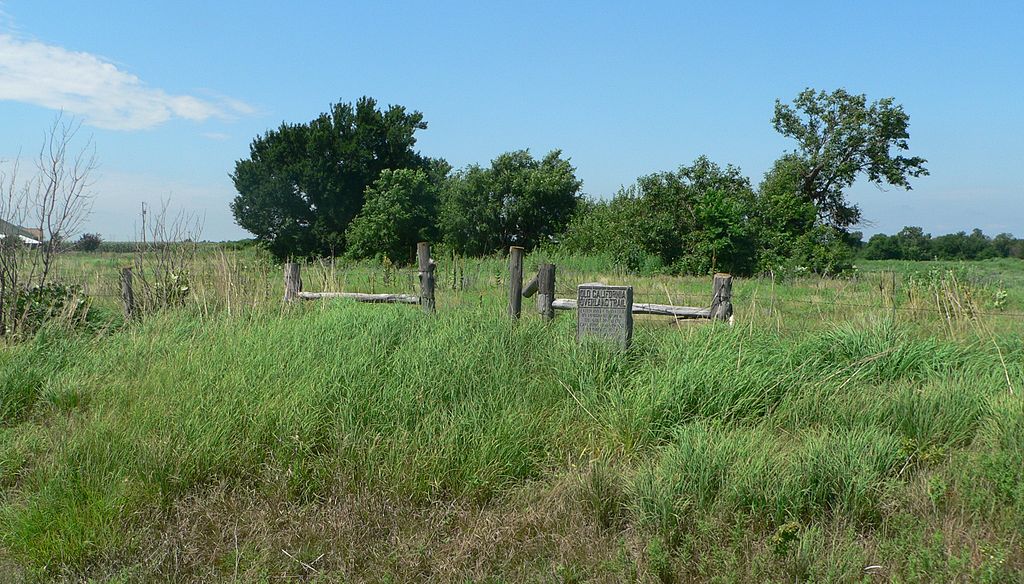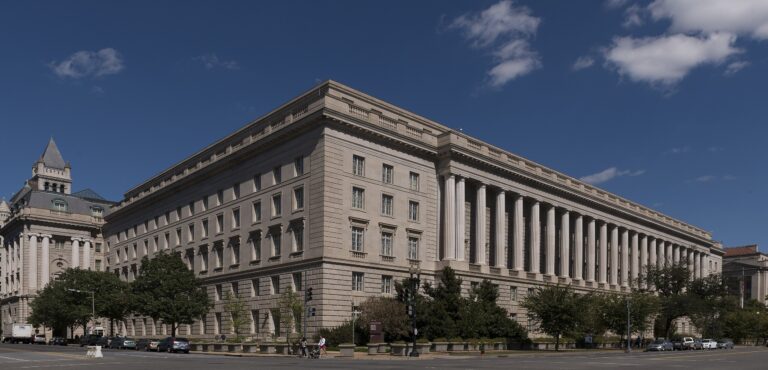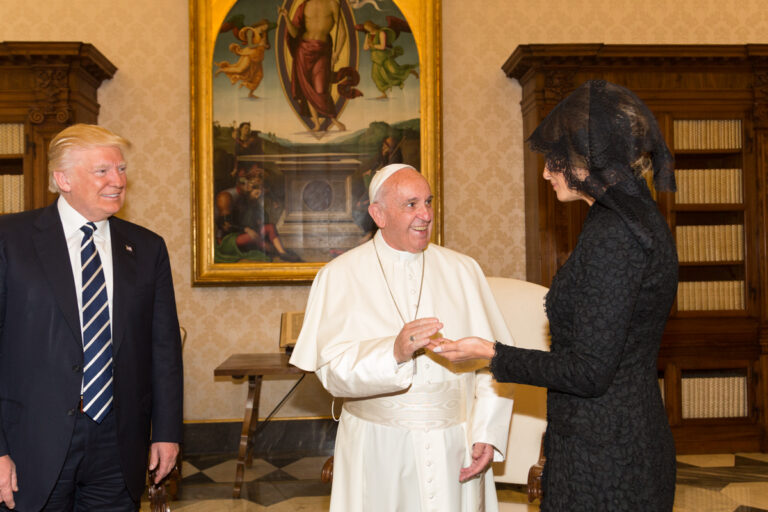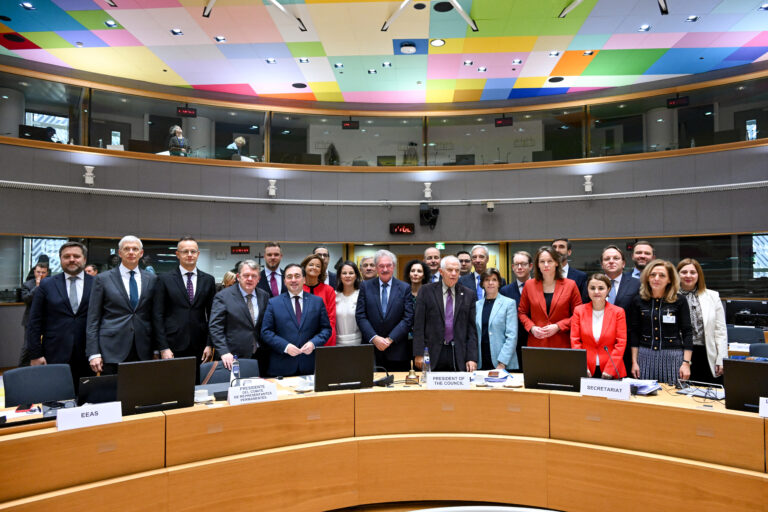
Economic and Religious Arguments for Welcoming Immigrants in a Nebraska Advocacy Alliance
Laura E. Alexander
Townsley-Murdock Immigrant Trail in Nebraska by Ammodramus (CC0 1.0)
This article is part of our series on Law, Religion, and Immigration. If you’d like to explore other articles in this series, click here.
Increased Immigration and Attitudes about Immigrants
In a conversation with a colleague the other day, I pointed out that the percentage of foreign-born people in the United States population is nearly as high as it was from 1890 to 1910. According to the Migration Policy Institute, as of 2020, 14.3% of the population in the U.S. was foreign-born. Census reports put the figure at 13.9% in 2022. In 1870, that percentage was 14.4; in 1890, 14.8; and in 1910, 14.7.
At the time, I speculated about whether we live in a cycle of sorts: the immigrant population rises to almost 15% of the overall population, anti-immigrant sentiments ramp up (or are easy to stir up by politicians with an axe to grind), and policies and practices that target immigrants for expulsion and cruelty are introduced or exacerbated. While, as James McBride has argued, suspicion of immigrants has never been absent from the American experience, the early twentieth century looked especially similar to our moment, in which lies about immigrants seem to take hold more easily and venom against immigrants makes its way into the rhetoric and policies of at least one major political party. The early twentieth century also happened to be the time when the foreign-born population was very high.
Upon further research, it turns out my hypothesis is not well-supported. Scholars have demonstrated that people certainly can perceive immigrants as more of a threat and develop more anti-immigrant attitudes when a greater percentage of foreign-born people join a country’s population. However, shifts in attitudes depend on many factors: whether the percentage of newcomers in a population is stable or increasing; how large the community is in which immigration increases racial and cultural diversity; the average socioeconomic status in a community in which migrants settle; and pre-existing individual attitudes about migration and who migrants are.
Organizations and advocates who argue for humane immigration policies and strive to shed light on immigrants’ contributions to the safety, economic well-being, and cultural vibrancy of communities must deal with all of these factors. Bare percentages don’t explain how immigrants will be perceived and where they may or may not be welcomed.
Workforce Needs at a Time of Falling Birthrates
One thing that is different about our current moment compared to other periods is the phenomenon of falling birthrates in many countries that receive immigrants, and the attendant economic and social consequences. With fewer children and young workers among native-born populations, advocacy organizations have modified their language as they seek to highlight immigrants’ contributions. This is true of an immigrant advocacy alliance in my state of Nebraska, called the Nebraska Alliance for Thriving Communities or NATC. Within this alliance, religious communities and leaders work together with immigrant leaders and advocates, business leaders, labor organizers, and nonprofit organizations to promote welcome for immigrants and recognition of their contributions to Nebraskan communities.
Examining the makeup and work of NATC allows us to consider how advocacy groups modify their rhetoric in a moment when young workers are sorely needed and how religious groups work with others whose concerns are sometimes complementary and sometimes in tension. Religious groups and others, such as business organizations, can have very different reasons for advocating for immigrant rights and well-being, even when their public-facing work is coordinated.
In the current moment, largely because of the low fertility rate in Nebraska and our need for workers, NATC’s public statements tend to focus on immigrants’ contributions to the workforce and to economic vitality. However, even if religious and humanitarian arguments are not currently top of the list, I argue that the presence of religious communities in this alliance is vital for two reasons: religious communities sustain the work of the alliance itself and the organizers who have brought it together, and religious arguments for realistic and humane immigration policies stand the test of time even when economic arguments change based on the specific context of business and workforce needs.
Nebraska Alliance for Thriving Communities
NATC arose out of conversations held over several years by Omaha Together One Community (OTOC), which is the Nebraska affiliate of the Industrial Areas Foundation (IAF), the oldest network of faith- and community-based organizations in the United States. Industrial Areas Foundation has historically worked closely with religious organizations to understand issues and needs in communities. Once communities’ pressing needs are understood, IAF affiliates create coalitions to urge political and community leaders to address those needs. Of OTOC’s 19 sustaining member organizations, 15 are religious, mostly individual worshipping communities. Religious groups are the backbone of OTOC, and they focus on the humanitarian needs of immigrants and others. And through NATC, religious groups gain a public platform to explain the religious reasoning behind their commitments to just and humane treatment for immigrants.
However, because politicians tend to be hyper-sensitive to economic needs, the public-facing players in the NATC are often business and, to an extent, labor leaders. The Nebraska Chamber of Commerce, Chambers of Commerce in several metro areas, and agricultural organizations like the Nebraska Pork Producers Association have been active in the NATC’s planning, press conferences, and advocacy meetings. In its public statements and conversations with elected leaders, NATC most often speaks of economic vitality and the need for workers. It’s not clear whether, in an age of anti-immigrant ideology, our elected representatives will be swayed even by the very clear economic need for immigrant workers. Still, the alliance has determined – rightly, in my view – that representatives are most likely to engage with the idea of welcoming immigrants for economic reasons.
Economic Arguments for a Better Immigration System
Fertility rates in the U.S. have declined precipitously; we seem to be hovering around 1.61.7 births per woman, where a rate of 2.1 births is needed to keep a population stable. And even that 1.6-1.7 rate is for all people in the United States. Since immigrant families tend to have more children than native-born, it’s safe to say the fertility rate of the native-born U.S. population is even lower.
NATC argues that in these circumstances, immigrant workers and families are needed to stabilize the state’s population and ensure a workforce for our industries, particularly agriculture and health care. The state of Nebraska has approximately 45,000 job openings in mid-2025, as well as a relatively low unemployment rate. Employers say they are unable to fill many open jobs, and some lament that there are so few pathways for immigrants to work in these jobs legally.
So there’s a strong economic argument to be made for any number of changes to immigration policy. U.S. businesses, and the citizen and foreign-born population, would all benefit from laws that create a path to citizenship or legal residency for immigrants who currently don’t have legal status, including “Dreamers” who were brought to the U.S. as children; that provide for more work visas in multiple industries, especially agriculture, construction, and healthcare; that increase refugee admissions; that allow for permanent status for immigrants who have lived under Temporary Protected Status for years; and that make changes to both work- and family-based immigration pathways so more people can enter the U.S. with legal status and a clear way to gain permanent residency and eventual citizenship. NATC has advocated for all of these.
A History of Inviting Workers in and Pushing them Out
The emphasis on workforce needs, and the fact that NATC exists as a coalition at all, hearkens back to other historical moments in which the U.S. found itself in need of workers and turned to immigration as a source. Well-known cases include recruitment of Chinese laborers to build railroads in the Western territory of the U.S. in the 1860s-1880s, as well as the bracero program of 1942-64, in which Mexican workers were recruited to work mainly in agriculture while the U.S. was experiencing labor shortages tied to World War II and its immediate aftermath. In both cases, as soon as the pressing need for labor was over, immigrant workers were expelled and the U.S. government tried very hard to ensure that the people they had initially invited in would stay out, whether through the Chinese Exclusion Act of 1882 or the so-called “Operation Wetback” in which Mexican laborers were forced to leave the U.S. Any “welcome” for immigrants vanished almost immediately.
The Limits of Economic Arguments and the Importance of Religious Advocacy
Immigration advocacy that focuses on workforce needs is sometimes effective, and it can potentially combat anti-immigrant rhetoric by demonstrating that immigration has a positive economic impact on both immigrants and the communities they join. However, the limitations of this kind of advocacy also point to the importance of religious and humanitarian voices in a coalition like NATC. For one thing, in our moment, pleading for better immigration policies based on workforce needs hasn’t yet made a difference in federal immigration policy. In 2023, Nebraska’s U.S. senators and representatives attended an event in which the executive director of government affairs for the U.S. Chamber of Commerce clearly explained the need for workers and the problems with current immigration policies. While the senators and representatives said they understood the problem and discussed possible tweaks to visa and permanent residency policies, they did not commit to any kind of larger-scale immigration reform, and most of them brushed aside the plea for more workers by arguing that the U.S. southern border must be “secured” first. No senator or representative from Nebraska has taken strong steps to promote changes to the immigration system since that time. It does not appear that the economic harms of unfilled jobs, or even the harms of massive immigration raids that devastate local businesses, provide sufficient motivation for politicians to make changes at a time of strong anti-immigrant rhetoric.
When economic appeals don’t gain traction, it’s admittedly unlikely that religious appeals will have a greater impact in the short term. However, the tendency of U.S. leaders to invite immigrants in to fill workforce needs, and then try to push them out when their work is perceived to be unnecessary, shows why the presence of religious groups in a coalition like the NATC is so important. Religious communities are the sustaining backbone of OTOC – again, most of OTOC’s member organizations who provide consistent funding for the organization are religious – and by extension of the NATC. They keep advocacy alive even in difficult times and maintain a focus on immigrants’ humanity and humanitarian needs. Sacred Heart Catholic Church, for example, has an Immigration and Refugee Team that has co-sponsored refugee families and has provided educational resources about immigration for years. First United Methodist Church likewise has an Immigration Ministry Team and has provided refugee co-sponsorship. Many business owners and managers certainly do recognize the humanity of immigrant workers, yet exclusively economic arguments don’t really provide reasons to honor immigrants’ family and community ties or to treat immigrants as full human beings with dignity and worth beyond their labor productivity. In the oft-quoted, here paraphrased, words of Swiss novelist Max Frisch, “We asked for workers. We got people instead.”
From an economic perspective, the low fertility rate in the U.S. is unlikely to change, and it’s possible that at some point the need for workers will be strong enough to overcome the anti-immigrant sentiments that are provoked and circulated by politicians. This has happened in Italy, where the government has said it will issue 500,000 new work visas from 2026-28, despite the fact that the current Prime Minister, Giorgia Meloni, is a far-right politician who was previously associated with neo-fascist groups and has campaigned on zero-tolerance policies against illegal immigration. Nevertheless, in the U.S. and several other wealthy countries, concerns about population stability and the number of workers do not automatically lead politicians to enact realistic and humane immigration policies.
Moreover, though immigrants nearly always bring greater economic success and vitality to the countries they enter, economic conditions do change, and arguments based on economic life change with them. Religious groups can provide stability for advocacy coalitions because their concerns for keeping families together and recognizing immigrants’ full humanity do not change. Religious groups also have standing to remind politicians, and others, that communities are stronger when people build bridges and care for each other as human beings with basic needs, family bonds, moral convictions, and cultural vitality in addition to potential economic contributions.
Multi-actor coalitions like the NATC are crucial advocates for reasonable and humane immigration policies. As evidenced by the origins of NATC, coalitions like this are often brought together by the hard work of religious communities. Economic arguments for pro-immigrant policies are important, especially at a time of low birthrates and a declining workforce. In the long run, however, successful advocacy relies heavily on the humanitarian grounding and consistent work of religious actors.♦

Laura Alexander is Associate Professor of Religious Studies and Executive Director of the Goldstein Center for Human Rights at the University of Nebraska at Omaha. She holds an M.Div. degree from the University of Chicago and a Ph.D. in Religious Ethics from the University of Virginia. Dr. Alexander’s research and teaching expertise is in religion and human rights, with a focus on human migration, refugee studies, and intersections of human rights, states, and borders.
Recommended Citation
Alexander, Laura E. “Economic and Religious Arguments for Welcoming Immigrants in a Nebraska.” Canopy Forum, November 6, 2025. https://canopyforum.org/2025/11/06/economic-and-religious-arguments-for-welcoming-immigrants-in-a-nebraska-advocacy-alliance/.
Recent Posts










